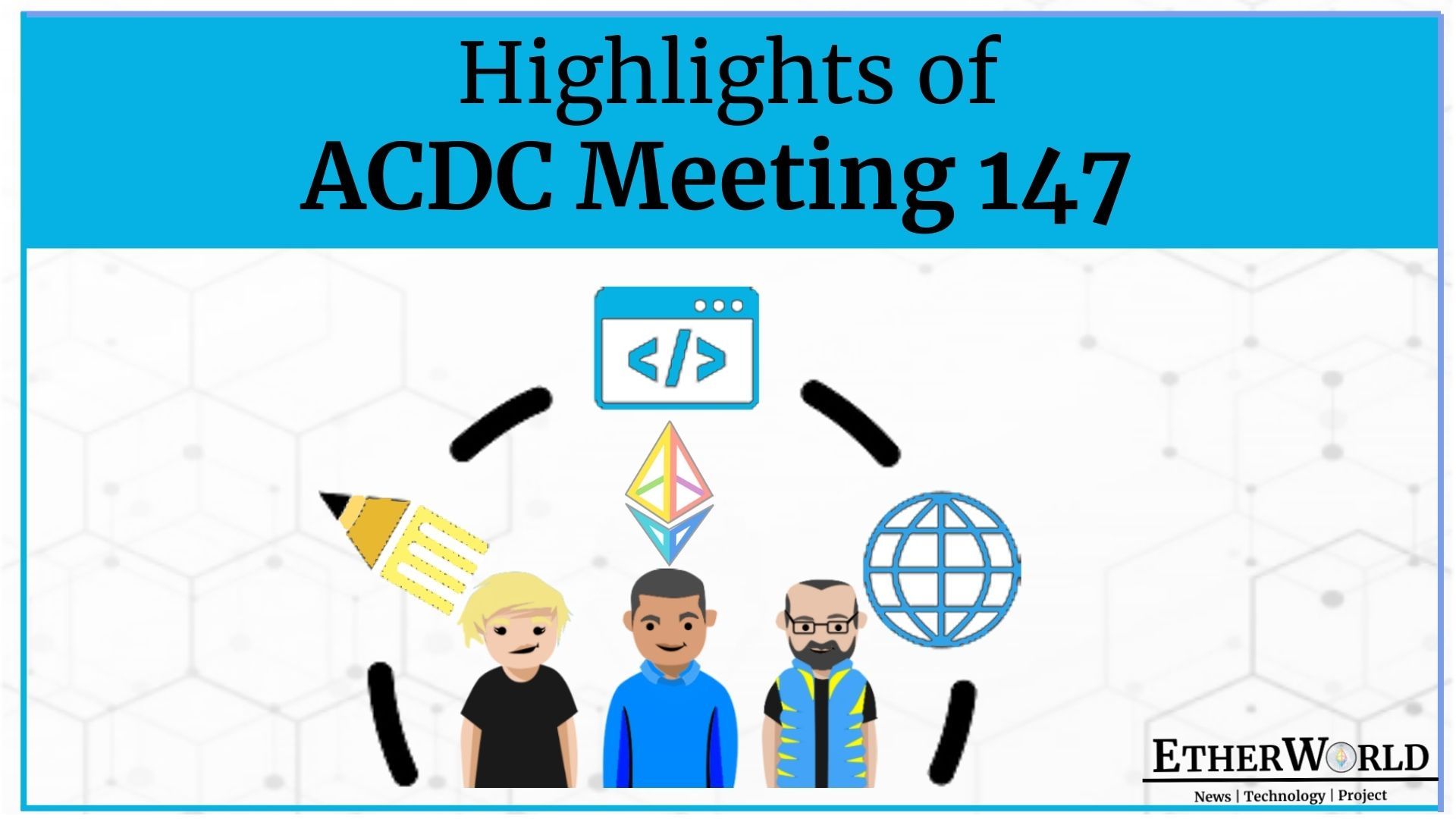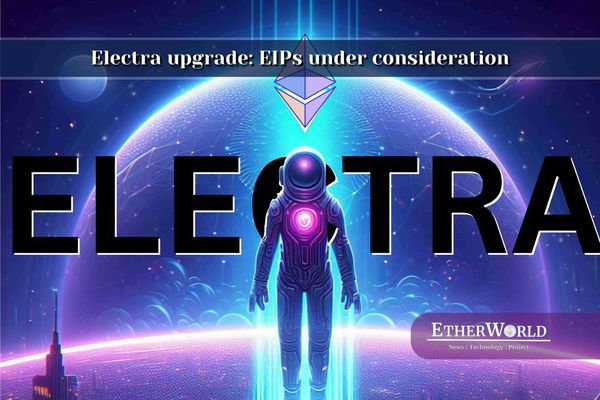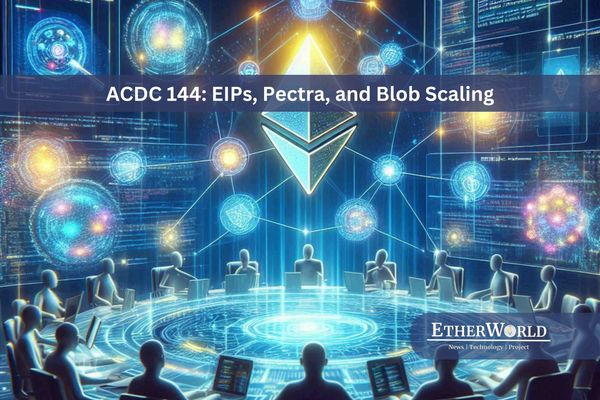- Renaming Field Index
- Updates on Devnet 5 & Testnets
- Gossip Limits & Gas Limit Changes
- EL & CL Coordination Changes
- EIP 7742
The call focused on critical updates & discussions, including renaming the field index for improved consistency, progress updates on devnet 5 & testnets, proposed changes to Gossip Limits & Gas Limits, coordination between EL & CL, and the implications of EIP 7742 for configuration flexibility & future upgrades.
Renaming Field Index
The change involves renaming the field index in the PendingPartialWithdrawal class to validator_index. This update ensures consistency with other structures in Ethereum's consensus layer, such as Withdrawal, where the validator's unique identifier is also referred to as validator_index. The adjustment eliminates ambiguity & aligns with existing naming conventions, thereby enhancing code readability & reducing the potential for confusion among developers.
The inconsistency originated from the differing definitions of Withdrawal & PendingPartialWithdrawal. In the Withdrawal class, introduced in the Capella upgrade, the field validator_index explicitly refers to the unique index of a validator. However, in PendingPartialWithdrawal, introduced in Electra, the field index was used instead to refer to the same concept. This dual use of index for different purposes could mislead developers, especially in scenarios involving both classes.
Renaming PendingPartialWithdrawal.index to PendingPartialWithdrawal.validator_index resolves this ambiguity by clarifying the field's purpose. It ensures that the term validator_index is consistently used to denote the unique index of a validator across all relevant structures. This change has already been implemented, as the corresponding PR has been merged.
Updates on Devnet 5
The team is working towards finalizing & launching Devnet 5 within a tight timeline, aiming for completion before the end of the month. However, concerns around readiness & testing delays have raised the possibility of pushing the schedule. Key challenges include outstanding updates to PRs & configurations, as well as minor but essential refinements to EIPs & specifications.
A critical roadblock is the extensive testing required across all client implementations. Recent changes, such as adjustments to gossip limits, consolidation logic, & sampling probabilities, need thorough validation to ensure they integrate seamlessly. These updates demand significant testing efforts to avoid introducing errors or inconsistencies into the network.
While the team remains focused on meeting the timeline, some core developers are skeptical about its feasibility. They advocate for a more realistic schedule that accommodates the necessary testing & implementation workload, emphasizing quality & stability over urgency.
Gossip Limits & Gas Limit Changes
The current gossip size limit is viewed as a protective measure against network spam & amplification attacks. Increasing this limit could allow for larger blocks, but it might also expose the network to potential risks, such as bottlenecks in gossip propagation. The team identifies a critical need to enforce uniformity across all clients to prevent consensus failures caused by varying implementations of gossip limits.
Core developers also explored whether the change should be tied to a scheduled hard fork or rolled out earlier. One concern is ensuring backward compatibility & minimizing disruption to nodes that may not upgrade promptly.
Another critical aspect discussed is the relationship between gossip limits & block production efficiency. Larger gossip sizes might introduce inconsistencies in how clients process transaction payloads, particularly if some clients fail to adopt updated limits in time. This raises questions about the feasibility of dynamic gossip limits that scale with gas limit changes. Core Developers also emphasized the importance of conducting thorough testing to evaluate how these changes affect the network under stress conditions, ensuring that the balance between scalability & security is preserved.
EL & CL Coordination Changes
Discrepancies between these layers could lead to inefficiencies or even consensus failures. For example, large transactions that meet the EL's criteria might still fail during gossip propagation in the CL. This underscores the need for tightly integrated updates across both layers to ensure smooth operation & consistency in block production.
Coordination between the EL & CL poses significant challenges, especially when implementing changes to transaction size limits. The current approach relies on aligning these changes through hard forks or other scheduled updates, but this process is time-consuming & susceptible to delays. There is also concern that nodes running outdated clients might exacerbate inconsistencies, causing network disruptions. To address this, developers propose defining a unified function that links the maximum gossip size to the gas limit, creating a dynamic system that adjusts with the network's evolving requirements.
Proposed solutions emphasize the importance of proactive coordination & testing. One idea is to enhance validation mechanisms within the EL to ensure transactions remain within permissible limits before being passed to the CL. Another is to enforce uniform configurations across all clients, ensuring that discrepancies do not arise during rollout. These updates require collaboration between client teams & careful planning to minimize risks, reflecting a broader effort to improve both network security & scalability while maintaining a balance between the layers' independent operations.
EIP-7742
This proposal focuses on passing both the target & maximum blob limits between the Execution Layer (EL) & Consensus Layer (CL). It is intended to provide flexibility & enable updates without requiring simultaneous changes in both layers. A central question is whether these limits should be included in every block header or handled through a configuration exchange during client initialization.
Adding these limits to the header or engine API introduces significant development & testing overhead. There’s general agreement that removing EIP-7742 from the upcoming fork (Pectra) would simplify development while deferring complex changes for future iterations.
Additionally, implementing EIP-7742 raises concerns about its impact on client synchronization & consistency, particularly in dynamic scenarios where blob limits might frequently change. While the proposal could enable CL-only forks in the future, simplifying configurations via static Genesis JSON files is seen as a more practical short-term solution. This approach reduces immediate complexity while allowing teams to revisit dynamic configurations as the protocol evolves.
Readers can watch Ethereum's Consensus Layer Meeting 147 here:
_____________________________________________________________________Disclaimer: The information contained in this website is for general informational purposes only. The content provided on this website, including articles, blog posts, opinions, and analysis related to blockchain technology and cryptocurrencies, is not intended as financial or investment advice. The website and its content should not be relied upon for making financial decisions. Read full disclaimer and privacy Policy.
For Press Releases, project updates and guest posts publishing with us, email to contact@etherworld.co.
Subscribe to EtherWorld YouTube channel for ELI5 content.
Share if you like the content. Donate at avarch.eth or Gitcoin
You've something to share with the blockchain community, join us on Discord!








